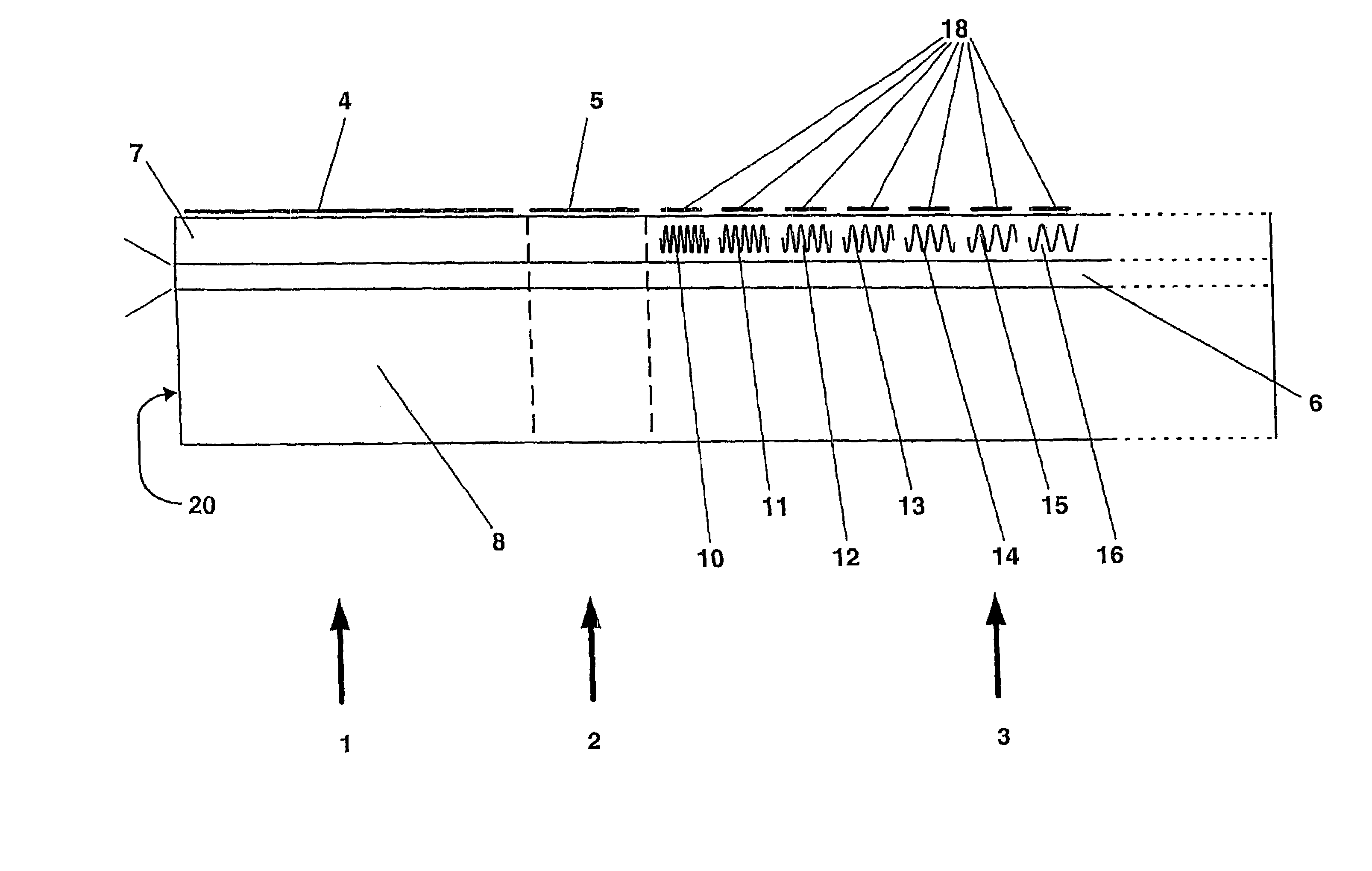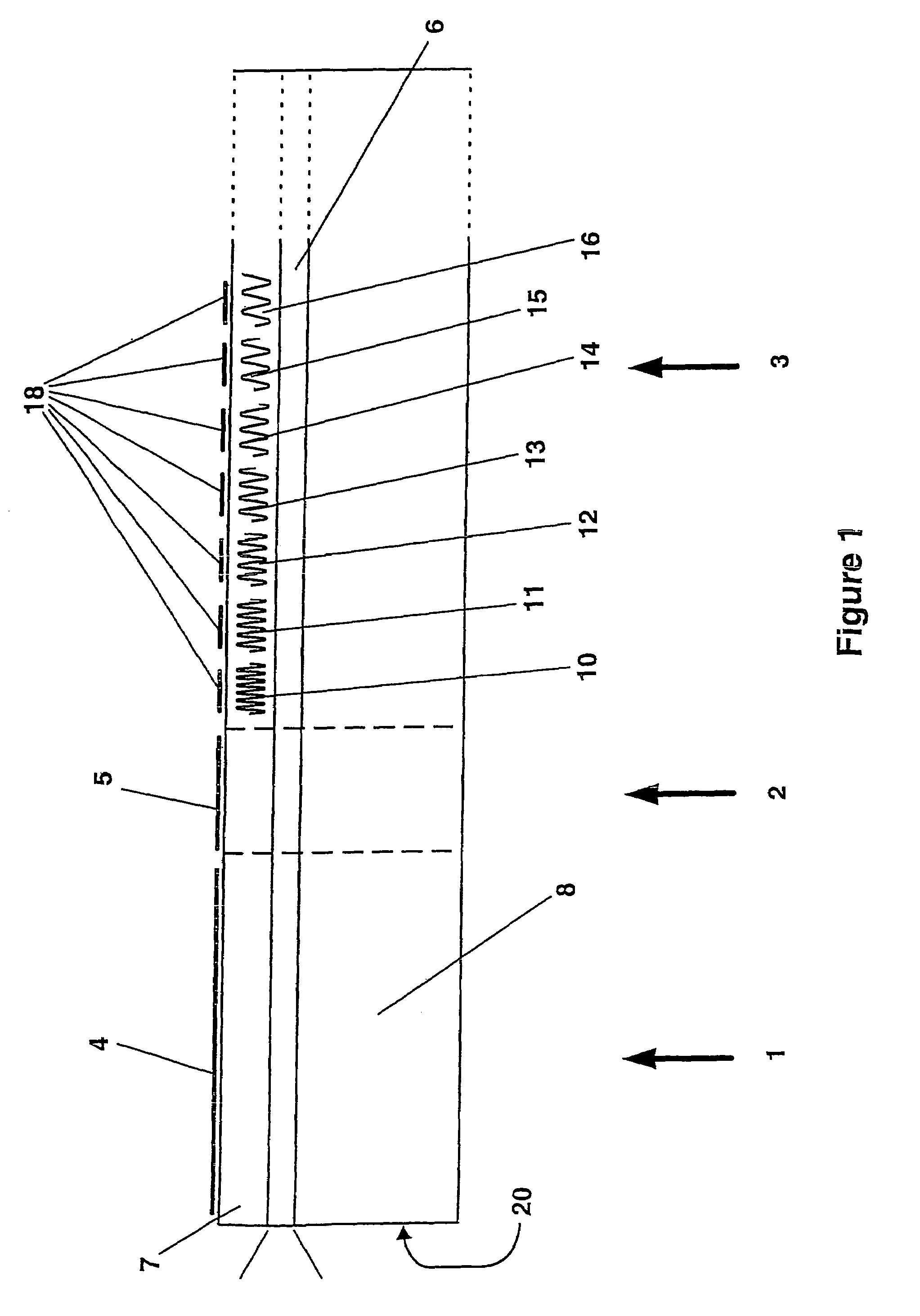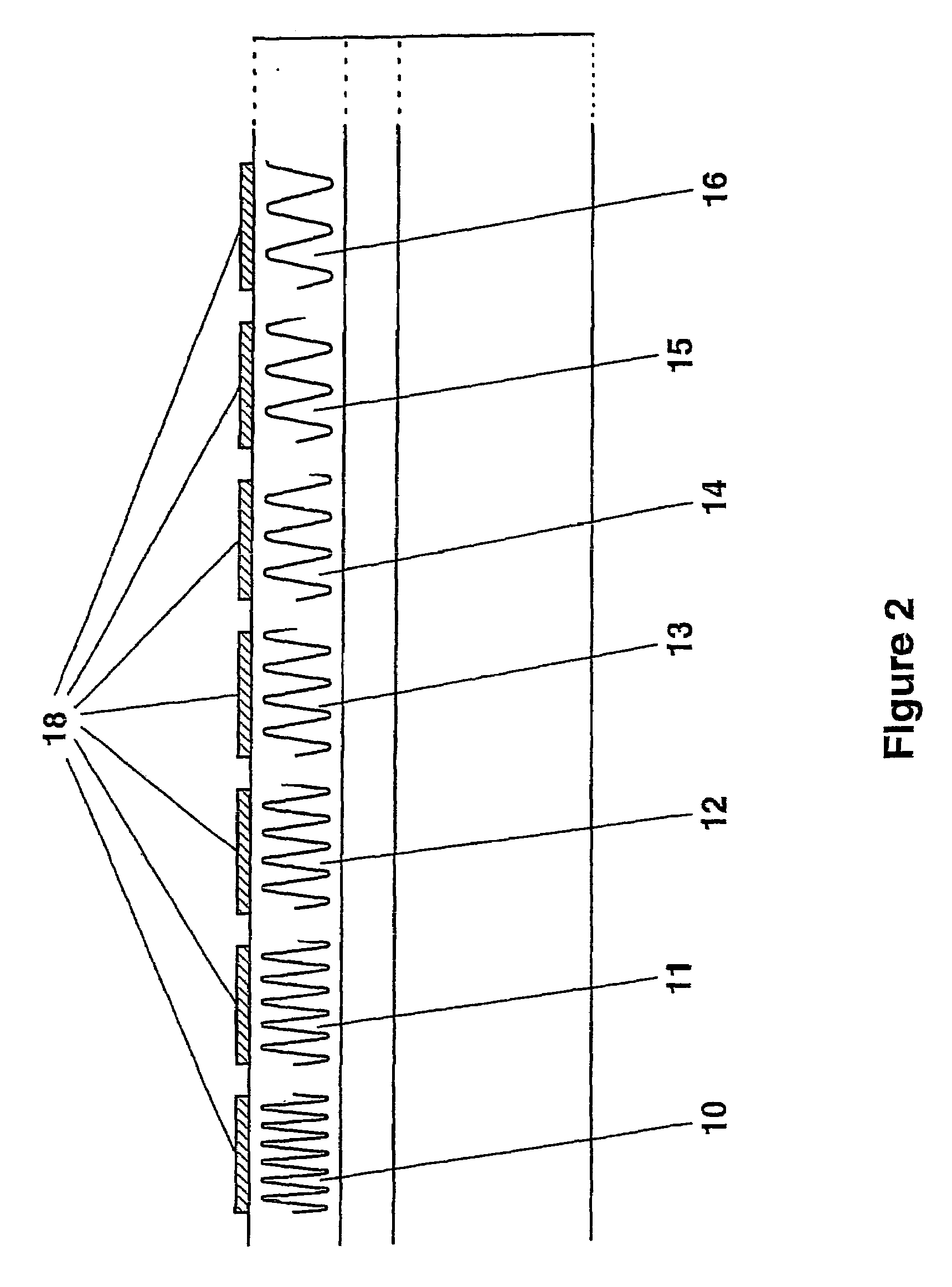Tuneable laser
a laser and tuning technology, applied in the direction of laser details, laser optical resonator construction, optical resonator shape and construction, etc., can solve the problems of reducing the output power of the laser, short wavelength loss, limiting the total optical bandwidth, etc., and achieve acceptable manufacturing costs and high optical output power.
- Summary
- Abstract
- Description
- Claims
- Application Information
AI Technical Summary
Benefits of technology
Problems solved by technology
Method used
Image
Examples
Embodiment Construction
[0028]The wavelengths of interest referred to above, for example the C-band wavelengths of 1530 to 1570 nm are the wavelengths of light in free space. When such light passes through a medium, of refractive index neff the wavelength of the light changes. The actual wavelength of the light within that medium which will be referred to herein as λ′, is the wavelength λ divided by the value for the refractive index neff. In other words
λ′=λ / neff.
where neff is the effective refractive index of the medium as seen by the propagating light.
[0029]It so happens that the glass (silica) fibres, which are commonly used in telecommunications systems, have low loss regions at about 1100 nm 1300 nm and 1500 nm. These regions are about 100 nm wide and consequently much work is done on producing lasers that produce light in the low loss regions. The same is true for the tuneable laser of the present invention. The specific examples of the invention are designed to work in the C-Band, but the invention ...
PUM
 Login to View More
Login to View More Abstract
Description
Claims
Application Information
 Login to View More
Login to View More - R&D
- Intellectual Property
- Life Sciences
- Materials
- Tech Scout
- Unparalleled Data Quality
- Higher Quality Content
- 60% Fewer Hallucinations
Browse by: Latest US Patents, China's latest patents, Technical Efficacy Thesaurus, Application Domain, Technology Topic, Popular Technical Reports.
© 2025 PatSnap. All rights reserved.Legal|Privacy policy|Modern Slavery Act Transparency Statement|Sitemap|About US| Contact US: help@patsnap.com



